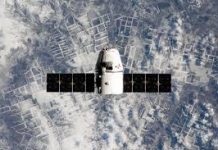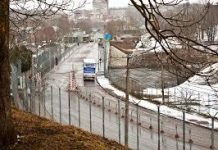
Inspired by Ukraine’s battlefield innovations, a rising number of European defense firms are now incorporating artificial intelligence into drone systems.
One noteworthy example is Ukraine’s covert “Spider Web” drone operation deep inside Russian territory on June 1. While the mission drew attention for its daring execution, the critical role of AI largely flew under the radar.
According to the Center for Strategic and International Studies (CSIS), AI-powered technologies were likely essential in training the software for explosive first-person-view (FPV) drones. These systems allowed drones to identify threats, suggest strike targets, and autonomously navigate to those targets if operator signals were lost.
This fusion of drones and AI is increasingly central to new designs being developed across Europe. At the recent Drone Summit in Estonia, several Latvian companies highlighted their efforts to integrate AI for precision targeting. Among them was Origin Robotics, which unveiled an autonomous drone interceptor aimed at neutralizing hostile UAVs.
Named “Blaze,” the drone uses AI to distinguish between different types of aircraft and other flying objects. Once it locks onto a target, it launches and intercepts by physically colliding with its payload.
In another major development, Finnish defense contractor Patria announced it would spearhead a European consortium focused on the Artificial Intelligence Warfare Adaptive Swarm Platform (AI-WASP). Backed by €45 million ($53 million) in funding from the European Commission, the project includes partners from Finland, Sweden, Estonia, Italy, Greece, and Spain. Its goal is to create AI-driven software for a variety of manned and unmanned platforms.
Czech-based LPP Holding has also entered the field, supplying Ukraine with AI-guided drones. Their MTS models use visual navigation powered by AI to operate in environments where GPS is unavailable, according to the company’s website.
Although AI is becoming more common in Europe’s unmanned systems, integrating it effectively remains a hurdle. One of the primary issues, says Samuel Bendett, an advisor at the Center for Naval Analyses, is the quality and source of training data. In fast-moving combat situations, drones must often rely solely on onboard data, without access to live external updates — making accuracy and reliability a challenge.
To adapt to these limitations, Ukraine has reportedly adopted a strategy of training smaller AI models on narrowly focused datasets rather than building massive general-purpose systems. A CSIS report notes that this approach allows for efficient processing on low-cost chips with limited computing power. These models can be rapidly updated using battlefield-collected data or open-source information from social platforms.
In Germany, Quantum Systems has introduced the Mosaic UXS platform — a unified AI-based command-and-control system for unmanned vehicles operating across air, land, and sea. The company claims Mosaic supports machine learning for mission planning and can coordinate swarm operations, assigning individual tasks to each drone.
Ukrainian developers are also advancing in this field, creating lightweight AI software and compact chips designed for seamless integration into various systems — from FPV drones to unmanned ground vehicle turrets.





